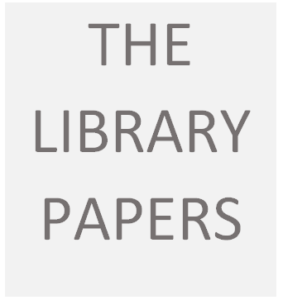Media Literacy
Marshall McLuhan in his foundational 1964 book Understanding Media considered ‘media’ as having the broad meaning of ‘any technology that mediates our communication including speech, print, television and radio.’ More recently this term is applied to electronic media only.
But it is limiting to think of ‘media’ only in terms of ‘electronic communication.’ There are many different forms of electronic media available to communicate, so now being ‘literate’ means we need to begin by asking in which mode or modes the communication is framed— audio, visual, or motion? But these questions need to go even further, beyond electronic forms: for example, if the mode is visual, are we looking at images or symbols? If symbols, are they words, numbers, icons or something else? And which specific media are being used—live or recorded, digital or analogue? In days gone by, this question of which medium to use was taken for granted (it was assumed to be spoken or written) but now, because communicators have the ability to choose among means of presentation, paying attention to the type of media highlights the different effects achieved by different media. So if we think, like McLuhan, that all communications tools are ‘media,’ then we can also start to think of all knowledge about how to use them as ‘literacy’ regardless of which medium is being used.
These distinctions between types of media are significant because they let us examine the affordances and constraints which result from framing the message by means of this particular medium, and to separate out the different effects of meda used in combination. It allows us to ask how might the message change if different media were used? Understanding these basic distinctions and beginning to think comparatively about how media shape messages, or in what ways “the medium is the message” is what constitutes (or should constitute) media literacy, exactly as McLuhan formulated the concept.
Even very young children can make these basic distinctions. Older students can become progressively more detailed in their analyses, depending on their purposes and needs. For example, if the mode is audio, is it used alone or in combination with another mode? What medium is being used to present this audio mode: is it recorded or live? If recorded, is it digital or analogue? Is the sound made by humans or not? If by humans, are they speaking or singing or something else? If non-human is the sound from a living creature or not? Or if the mode is movement, again you can ask is this alone or in combination?
I have created an example of a multi-modal project in 1.2 Exploring Multi-Modal Texts, where one set of materials used includes film, picture books, chapter books, graphic novels, and traditional novels, all of which require students to ‘consume’ them by watching, listening, or reading, and only one of which could be considered ‘digital’ (the film was originally an electronic format translated into digital); and where a second set of materials requires students to design and ‘produce’ their own projects by means of writing, speaking, filming, or drawing, with a choice of using any two of the digital or analogue media formats, and then to compare their experiences with authoring using each of these tools. This assignment requires literacy in both the consumption and production of multi-media texts.
Multi-Media or Multi-Modal?
In discussions about communication channels, there is a slight difference between the terms ‘mode’ and ‘medium.’ Therese terms are used to distinguish between the design/creation stage (which mode/s to use) and the production stage (select specific media to present the finished project), but this difference is slight and easily blurred. If you are an academic doing research in these areas, the distinction between mode and medium offers useful precision. For everyone else, these terms are virtually synonymous and the term ‘media’ is more familiar and more widely used. However, here I will be using ‘mode’ to refer to the resources available to makers and creators, which I have categorized as sound, image and movement; and I will use ‘media’ to refer to the means of producing and presenting communications.
Because of the tendency for modes and media to be used in combinations and clusters, the terms ‘multi-modal’ and ‘multi-media’ are used at least as frequently as the singular ‘mode’ or ‘media.’ Below is a link to a scholarly article by Claire Lauer explaining the differences.
http://williamwolff.org/wp-content/uploads/2010/01/lauer-cc-multimodal-2009.pdf







